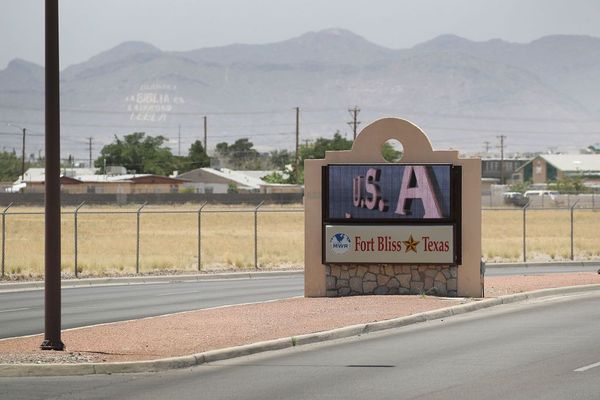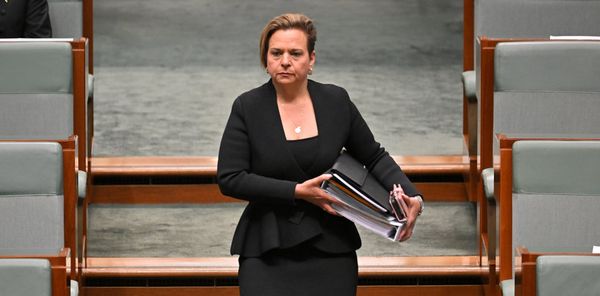
The Reserve Bank’s decision to pause its record run of interest rate rises earlier this month was lineball, with the central bank board deciding it needed more information to determine “when and how much more” they would be lifted.
Minutes from the 4 April rates meeting, released on Tuesday, show the nine board members examined at length the case for another 25 basis-point increase. That would have made it 11 consecutive rate hikes and lifted the cash rate to 3.85%.
The case for another rate rise included the usual comments that inflation – running at an annual pace of 6.8% in February – “remained too high and the labour market was very tight”, the minutes show.
In addition, the board weighed up two other factors that “were relevant to the case” for more interest rate increases. These were the faster than expected pickup in population growth as immigration levels rose, and the “increased risk of larger wage increases in parts of the economy”.
However, the board ended up opting to halt the rate hikes in order to gather more information on the economic impacts of the 10 increases so far, given their full effects would take time to be felt. “Members judged that monetary policy was already restrictive,” the minutes showed.
By the 2 May meeting, board members will have access to the March quarter consumer prices index figures that are scheduled for a 26 April release. RBA staff are also due to “present a full set of updated forecasts” at that May meeting.
In the end, there was “a stronger case to pause” at the April gathering than to lift the cash rate.
Still, “it was important to be clear that monetary policy may need to be tightened at subsequent meetings”, implying that the RBA may still have more than one rate rise to come.
Indeed, the RBA’s projections of inflation returning to its target band of 2-3% by mid-2025 “were conditioned on monetary policy being tightened a little further”, it said.
Prior to today’s minutes, investors viewed the chance of another pause in May as about a 90% chance. They were also predicting the next move would be a rate cut, a stance at odds with many economists who forecast at least one more interest rate increase.
Some economists, such as Deloitte’s Stephen Smith, have identified the prospect of a consumer recession for 2023, with household spending expected to finish the year below where it started.
The RBA, though, has only identified “a material slowing in the growth of consumer spending” so far.
“[M]ost households were well-placed to navigate the financial challenges associated with higher prices and interest rates, especially if employment remained resilient,” the minutes show.
“However, there were parts of the household sector that are under financial stress and, as a result, would have to scale back their spending to minimise the need to draw upon savings.”
Since the April board meeting, the Australian Bureau of Statistics has released labour market figures that were more robust than economists had forecast. The jobless rate remained at 3.5% in March with a net increase of more than 50,000 jobs including about 72,000 additional full-time positions.
House prices, too, had started to tick higher in some markets partly because of the increased population growth. Board members “observed that there were already signs that the recent fall in housing prices might be smaller and more short-lived than expected”, the bank said.
For now, the RBA expects wage increases to remain well below the headline inflation rate even with the unemployment rate hovering at half-century lows and an expected increase in the pace of public sector wage rises.
“Firms in the [RBA’s] liaison program expected annual wages growth in the private sector to level out at a little below 4%,” the minutes showed. “Wages growth in the public sector was likely to increase in coming quarters as recently announced state government wages policies take effect.”
The RBA did not name NSW, but the election of the Minns Labor government is expected to result in higher wage increases in the country’s most populous state.
NSW’s rail workers, though, did feature in the minutes, with the RBA noting the Fair Work Commission had awarded wage increases to them above the state wage cap.
The incoming treasurer, Daniel Mookhey, said on Monday the government had an election mandate to lift the current public sector wage caps of 3% for 2023-24 and 2.5% for subsequent years.
While Australia’s domestic considerations dominated, international issues, particularly financial stability, also feature in the minutes.
The RBA noted that economic activity in China, Australia’s largest trading partner, “had begun to recover rapidly in the early part of the year from earlier Covid-19-related disruptions”.
China provided more evidence of that pickup on Tuesday. The country’s GDP in the first quarter of 2023 accelerated to 4.5%, compared with a year ago, China’s national bureau of statistics said. That pace was faster than the 4% forecast by economists, and put the country on track towards meeting that nation’s target of 5% growth for this year.







